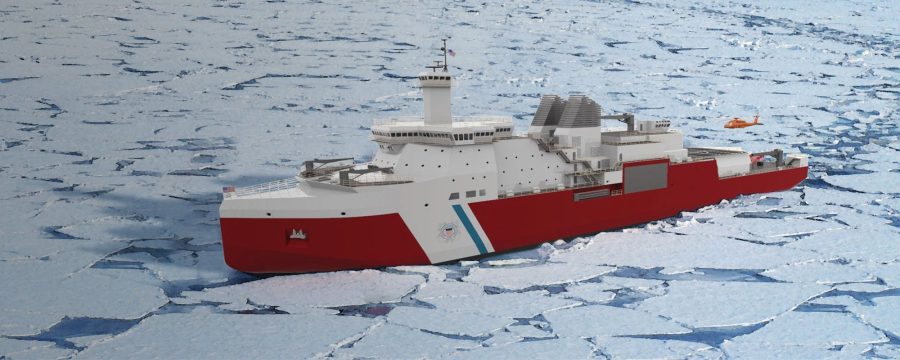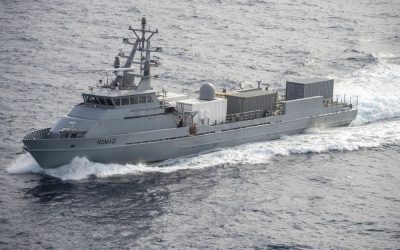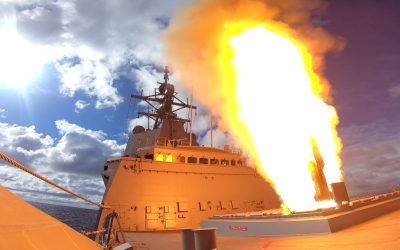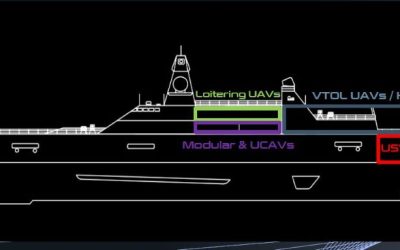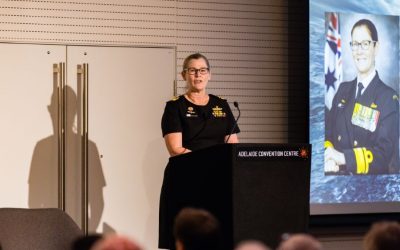Uncertainty surrounds the start of construction and a delivery date for the US Coast Guard’s flagship Polar Security Cutter
A delivery date for the first of the US Navy’s trio of Polar Security Cutters (PSC) remains unclear following testimony given to the House Transportation and Infrastructure Subcommittee on Coast Guard and Maritime Transportation in April 2023.
Originally due to be delivered in fiscal year (FY) 2025, the date at which the ship will be delivered could now slip until 2027, Vice Admiral Peter Gautier, deputy commandant for Operations in the US Coast Guard told the subcommittee.
As highlighted by the July/August 2019 issue of Warship Technology, April 2019 saw the US Coast Guard and US Navy, through an Integrated Program Office (IPO), award VT Halter Marine in Pascagoula, Mississippi, a firm fixed-price incentive contract for detailed design and construction of the PSC. At the time, construction of the first PSC was due to begin in 2021, with delivery anticipated in 2024, but the design ‘does not yet have sufficient design maturity’ for firm dates for the start of construction or delivery to be confirmed.
The aim of the PSC programme is to acquire three new heavy polar icebreaking vessels, to be followed by the acquisition of up to three new Arctic Security Cutters ((ASCs), that is, medium polar icebreakers). Procurement of the first two PSCs is fully funded and the Coast Guard’s proposed FY2024 budget requests US$170 million in continued procurement funding for the PSC programme, which would be used for procurement of long lead time materials and government-furnished equipment for the PSCs, and for other programme expenses.
The Coast Guard’s proposed FY2024 budget also requests US$125 million in procurement funding for the purchase of an existing commercially available polar icebreaker that would be modified to become a Coast Guard polar icebreaker, to help augment the Coast Guard’s current capacity until the new PSCs enter service, and to continue augmenting the Coast Guard’s polar icebreaking capacity after the PSCs enter service. The Coast Guard requested the US$125 million as part of its FY2023 budget request; Congress, in acting on the Coast Guard’s proposed FY2023 budget, denied the request. The total cost to purchase the ship and then modify it to meet Coast Guard mission needs is uncertain. The Coast Guard’s proposed FY2024 budget also proposes to initiate a new procurement programme for procuring a new Great Lakes icebreaker that would have capabilities similar to those of Mackinaw, the Coast Guard’s existing heavy Great Lakes icebreaker. The Coast Guard’s proposed FY2024 budget requests US$55 million in initial procurement funding for the ship, whose total acquisition cost, the Coast Guard estimates, might be US$350 million, depending in part on the exact design that is developed for the ship.
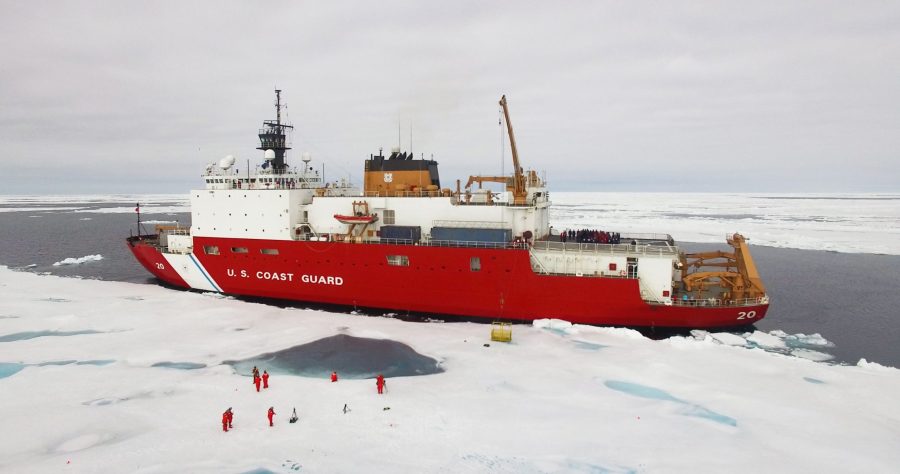
The US has not built an icebreaker since the mid-1970s
According to an April 2023 report from the Congressional Research Service (CRS), ‘Coast Guard Polar Security Cutter (Polar Icebreaker) Program: Background and Issues for Congress,’ the US Navy and Coast Guard in 2020 estimated the total procurement costs of the three PSCs in then-year dollars as US$1,038 million, that is, about US$1 billion, for the first ship, US$794 million for the second ship and US$841 million for the third ship, for a combined estimated cost of US$2,673 million, that is, about US$2.7 billion.
As highlighted above, on 23 April 2019, the Coast Guard-Navy Integrated Programme Office for the PSC programme awarded a fixed-price, incentive-firm contract for the detail design and construction for the first PSC to Halter Marine, a shipyard that was owned by Singapore Technologies Engineering. On 29 December 2021, the Coast Guard exercised a fixed-price incentive option to its contract with Halter Marine for the second PSC. In November 2022, ST Engineering sold Halter Marine to Louisiana-based Bollinger Shipyards. The former Halter Marine is now called Bollinger Mississippi Shipbuilding.
In December 2022, the Coast Guard stated that the first PSC ‘might be delivered to the Coast Guard in 2026 or 2027,’ but in April 2023 – during a hearing on the Coast Guard’s proposed FY2024 budget before the Coast Guard and Maritime Transportation subcommittee – Admiral Linda Fagan Commandant of the Coast Guard was unable to confirm dates when questioned by Representative John Garamendi.
Admiral Fagan said: “We are on budget, on contract for the Polar Security Cutter. We continue to work closely with the yard to get to the correct level of maturity on detailed design.”
Interrupting the Admiral, Representative Garamendi said: “This is not going well. There’s all kinds of design problems…” to which the Admiral replied: “I am confident in the design and confident in the yard. We’ve got work to do to mature that design. We have not built an icebreaker in the US since the mid-1970s. This is an incredibly complex ship to build the steel thicknesses. The scantlings will take effort to ensure that the design’s at the right level of maturity.
“If we begin constructing before there’s an appropriate level of design that will continue to delay reaching full operating capacity with the vessel downstream. We are engaged with the yard and in the planning process through the Integrated Planning office with the US Navy.
“Everyone understands the sense of urgency. This is a critical national security need for the country. We need icebreaking capacity as a nation in the Arctic. We’re an arctic nation. We need that icebreaking capacity and we are committed to working with the yard to be 100% confident in the design as we begin to build it, that it will be the capability that the nation needs.”
Asked by Representative Garamendi when the design will be completed, the Admiral said: “I would give you a date if I had one. I don’t have a definitive date from my team. I’m hopeful we will have one soon. Once we’ve got that level of design maturity, we will begin to put estimates around what the actual date.”
Asked by Representative Garamendi when the PSC might actually be built, the Admiral said: “The design will be completed soon, I am optimistic. Once we begin to build the ship, it is a complex ship and it will take a number of years to build.”
“So which decade?” said Representative Garamendi. “I do not want to put a date out there without the detailed design,” the Admiral replied, “it will be several years, three plus to begin to get to completion on that ship.”
A Government Accountability Office (GAO) report of 20 April, said of the PSC programme, a May 2025 delivery date for the lead ship is no longer realistic. It stated there is not enough information from the shipbuilder to determine a new delivery date or whether schedule goals will likely be breached.
“Design immaturity and the shipbuilder’s inexperience working with the specialised steel needed for hull construction remain the programme’s top risks,” said programme officials interviewed by the GAO. “To help train the shipbuilder’s workforce, the programme is planning for an early production phase prior to completion of the design, contrary to GAO leading practices. The critical design review, scheduled for December 2022, will likely need to be postponed given the status of design progress.”
The GAO report said oversight of the programme is “hampered” and stated that the shipbuilder’s deficient business systems “are not producing reliable accounting, schedule, and cost data.”
The report also noted that May 2025 is “no longer realistic because of challenges such as Covid-19 effects and the shipbuilder’s inexperience with large government acquisitions.”
Coast Guard officials told the GAO that they are mitigating some of these risks by conducting studies on the specialised steel required for the vessel and planning for an early production phase. This phase will allow the shipbuilder to start constructing up to eight out of 85 selected modules of the ship deemed to be low-risk prior to completing the ship’s design.
